Take A Trip Through Time With Emily Graslie
16:47 minutes
A whole lot of folks’ summer plans have been cut short this season. Maybe you were planning a family road trip to visit a national park. Or your local science museum. Now, you can watch from home, as Emily Graslie, executive producer, host, and writer for the PBS series “Prehistoric Road Trip,” takes us along for the ride to some of the big geologic sites across the country. She talks about the future of museums and science communication.
“Prehistoric Road Trip” is currently streaming on pbs.org. See a few behind-the-scenes moments below!
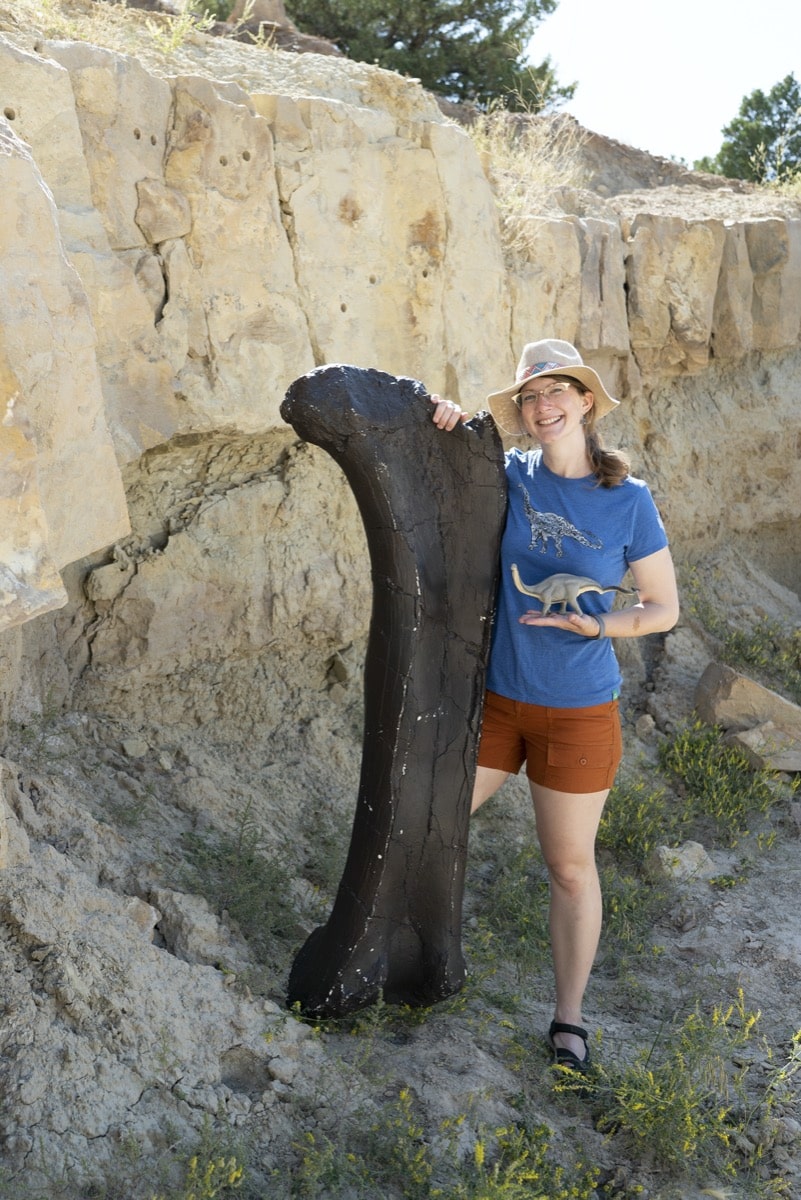
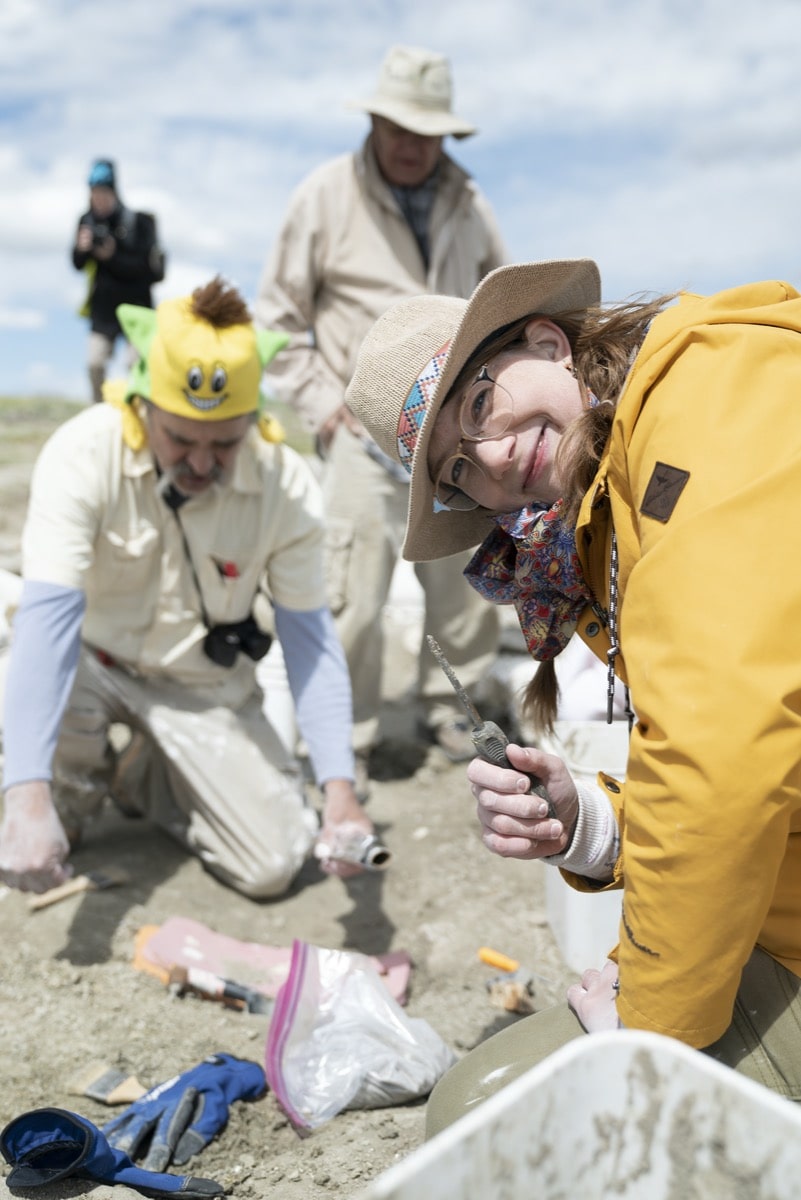
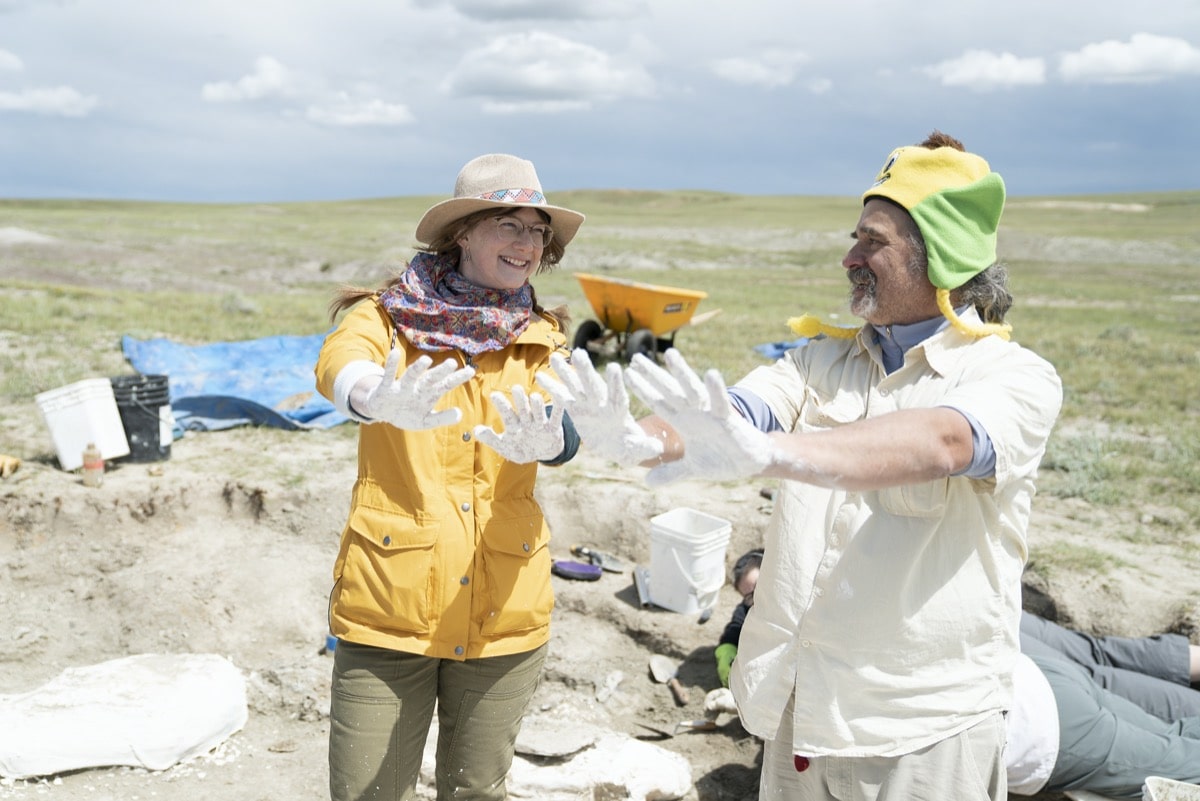
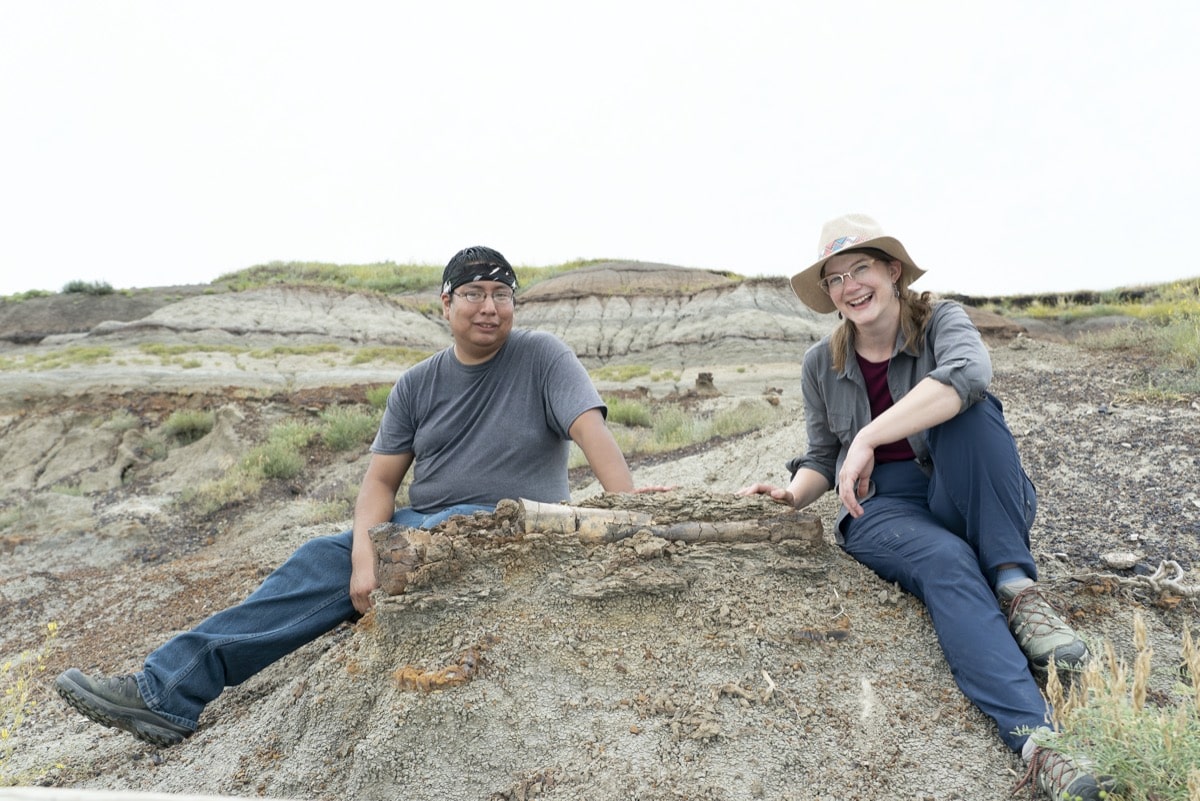
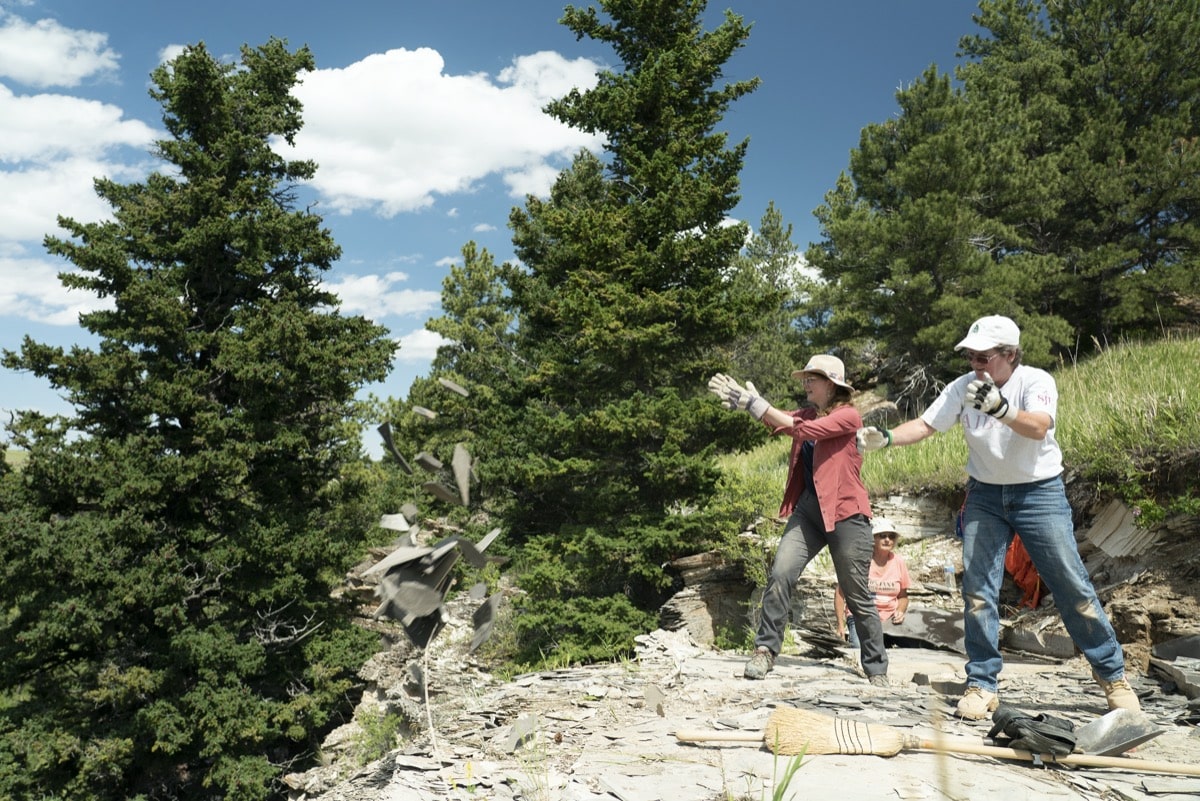
Invest in quality science journalism by making a donation to Science Friday.
Emily Graslie is the Executive Producer, Host and writer for the PBS series Prehistoric Road Trip. She’s also Chief Curiosity Correspondent at the Field Museum of Natural History in Chicago, Illinois.
IRA FLATOW: This is Science Friday. I’m Ira Flatow. A whole lot of folks’ summer plans have been cut short this season. Maybe you were planning a family road trip to visit a national park or your local science museum. You probably won’t be able to go in person for a while, but my next guest is here to help out.
Emily Graslie is the executive producer, host, and writer for the PBS series Prehistoric Road Trip. She is also chief curiosity correspondent– get that– at the Field Museum in Chicago. She’s here to take us along for the ride to some of the big geologic sites around the country and talk about the future of museums and science communication. Welcome to Science Friday.
EMILY GRASLIE: Hi. Thank you so much for having me.
IRA FLATOW: Nice to have a fellow communicator on the show.
EMILY GRASLIE: Yes. [LAUGHS] Yes.
IRA FLATOW: Let’s talk about this. Especially since the pandemic, you can’t go into a museum and view the exhibits for yourself, but your work is about bringing the collections to people through YouTube and online. Tell us how you do that.
EMILY GRASLIE: Yeah. Well, I mean, there’s this amazing statistic that we love to share at the Field Museum, which is that we have over a million square feet of exhibition space. And yet out of everything that you can see on display, it still only represents about 1% of our entire holdings as a collection. So we’ve got 99% more artifacts, specimens, dinosaurs, everything else behind the scenes, so to speak. How do you provide access to all of that additional amazing material and information and collections?
And it turns out that grabbing a camera and making a YouTube video about some of the stories that can be found in the research collections of natural history museums is a pretty effective way of getting the information out there. And so that’s what I started doing about seven years ago, and I’ve been making YouTube videos about natural history museums ever since.
IRA FLATOW: Do you think after the pandemic is over that we’re going to see museums working in a different way, perhaps doing more like what you’re doing now, bringing it out to the people instead of just going to the museum?
EMILY GRASLIE: Oh, absolutely. I mean, honestly I’ve been doing this for a while– like I said, seven years. And ever since the pandemic, there hasn’t been a day that’s gone by where I haven’t been approached by a museum director or an arts board council or some other consultancy group who are all eager to learn more about how to participate and get involved in this digital landscape because it is becoming so apparent that it’s a need for these cultural and scientific organizations to reach out online to widen their communities and to increase engagement, especially during times of physical closure.
IRA FLATOW: Let’s talk a bit about your Prehistoric Road Trip. What were you trying to find out?
EMILY GRASLIE: Well, I was approached by WTTW, Chicago’s public broadcast station, back in 2017 with this question of whether or not I’d ever thought about making a broadcast show about anything. Most of our YouTube videos are like 7 to 10 minutes long. And they were like, “What about an hour? Could you fill an hour?”
And the first thing that came to mind was an exploration of Western South Dakota, which is where I’m from originally, but it’s an area that’s known by geologists and paleontologists for being some of the most dynamic and amazing fossil sites and geological sites in the whole country. And so we wanted to start there and essentially do a drive through deep time.
And when we pitched this idea to PBS, they got so excited about it. They said, “Well, expand outside of just South Dakota, and maybe you can fill three hours.” And so those were sort of our parameters, which is that we want to bring viewers on a road trip with us and drive through deep time, visiting as many different sites representing as many different periods of geologic history as possible. And the result is a three-hour long series that takes you through about 2 billion years of Earth’s history.
Prehistoric Road Trip was an opportunity for me to rediscover the area that I left when I went to college and then moved to Chicago, and it really helped me gain a whole new appreciation for an area that I thought wasn’t terribly unique or interesting. And the complete opposite is true. There’s so much more we don’t know about certain parts of the world, and there’s so much more to find.
IRA FLATOW: And you actually get to work along Sue the T-Rex, right?
EMILY GRASLIE: Yeah. So the amazing thing about Sue the T-Rex, it’s the Field Museum’s Tyrannosaurus Rex and it’s the largest and most complete T-Rex fossil ever excavated. And sue was initially discovered outside the tiny town of Faith, South Dakota, in the early 1990s. And what’s funny about faith is that that’s where my family’s from. My dad’s a lifelong farmer and rancher.
We’ve known my whole life that there are dinosaurs out in this landscape. And then for one of the best ever found to be from the same part of the country really made me re-evaluate what does it mean to be a part of this part of the country or from here, especially when not a lot of people are from that part of the country.
IRA FLATOW: Do you think your dad may have stumbled across a bone once and just said, “Oh, what’s this dog bone doing here,” when it was really a dinosaur or something?
EMILY GRASLIE: Oh, I– 100%. I just inherited some remnants of my grandfather’s fossil collection, which are really, yeah, really just like random– like huge, like 20 pound chunks of weathered bone that he would find while he was tilling his farm fields. And he would find them throughout working in the pastures, checking on cattle. And he would pick them up and just put them in a shed. He didn’t really know what they were or what animal they belonged to, but he knew that they were prehistoric. And when he passed away, that collection went to my father, and he just recently gave it to me.
IRA FLATOW: No kidding.
EMILY GRASLIE: Well, to be honest, a lot of it is not really scientifically valuable at this point, because we don’t actually know exactly where it came from, just like a certain kind of area, and most of it is unidentifiable. It’s like an Edmontosaurus is a huge dinosaur. It’s like a broken-up Edmontosaurus limb bone. That said, there’s still like– they have a lot of value for us personally, so probably keep it.
IRA FLATOW: Wow. So tell me then in all of your travels, what is your most exciting find?
EMILY GRASLIE: Yeah. There are exciting finds that– I think what makes them so exciting is that they’re not that interesting at first maybe. One of the sites that really blew my mind was we were in Hell Creek State Park in Montana, north of Jordan. And we were out there– we had spent the last day on this Triceratops skull site, where we were literally excavating the skull of a Triceratops. It’s been buried for 66 million years. We’re the first people who have seen the face of this animal. And the next day, we went out to a fossil clam site. And to be honest with you, the triceratops was amazing, the clams were exciting.
Because when you start to learn about the information that can be pulled out of a fossil clam, you learn things that like because of the accretion layers and the way in which a clam grows throughout its lifetime, it can pull certain chemicals and elements out of the water that it’s growing in. And that’s recorded once this animal dies and becomes fossilized.
So there are researchers who study the clams that were living in the rivers that the dinosaurs were drinking out of. And it’s because of the clams that we can know things like the temperature of the water, the chemistry of the water the animal was living in, and it just provides so many additional contextual bits of information about this Triceratops that we were also looking at. So I think some of the most exciting things to me were finding the smaller details of a prehistoric landscape and looking at what scientists are able to extrapolate from that information, from unassuming places like clams.
IRA FLATOW: Yeah. That’s really exciting that– and knowing you’re the first person to stumble on something that’s 60 million years old.
EMILY GRASLIE: Yeah, it’s thrilling.
IRA FLATOW: And science isn’t just about the scientists. There’s an entire community that is involved. I know you talk to Indigenous communities and landowners too.
EMILY GRASLIE: Yeah. That was a big part of what we wanted to do with the show, was again to show just all the different intersections of people with science and paleontology specifically. And a big part of that is acknowledging that people have been living in North America for thousands of years, tens of thousands of years. And it’s– you just understand that there are deep histories and cultural meanings, interpretations assigned to a lot of the fossils that Indigenous people would have been coming across for hundreds of years.
And there are a couple of different communities, one in Standing Rock at the Standing Rock Institute of Natural History in North and South Dakota and then the Oglala Lakota College in Pine Ridge in South Dakota. We shared stories from both of these places about the history of fossil collecting and Western paleontology and how it intersects with Native American tribal communities in that part of the region just to kind of show the new areas where this field can be expanded and the new, exciting work that’s being done in collaboration with native scholars in the area.
And to me, that is one of the other really exciting parts of this– not just this program, but the field of paleontology in general is understanding that the people who live in Standing Rock live in some of the most fossil-rich part of the country. They’re deeply interested in understanding these prehistoric landscapes from a cultural context is to me really exciting.
One of the researchers who we interviewed down at the Oglala Lakota College is somebody whose work I started looking into months before we were filming and just figuring out what the narrative is, what is the angle here, what are we seeking to accomplish by sharing these stories. And to earn the trust of those community members was– that’s relationship building that I take incredibly seriously, and I don’t ever assume that it’s going to be granted to me. I mean, it was a privilege to share those stories as a filmmaker and a documentary film producer. I’m honored that they were willing to work with us.
IRA FLATOW: You know, I was thinking the other day with all of the science that we have now with the pandemic and with climate change, do you think people are becoming more science literate and more eager to learn about new things?
EMILY GRASLIE: 100%. I have seen such a shift in how scientists are portrayed in the media in the last seven years that I’ve been heavily working in this space. I think there’s been a certain normalization of scientists as everyday people, right? Like we’re starting to see– you see these– and mostly on movements on social media and a lot of these other celebrations of the many diverse people who make meaningful contributions to these fields, we’re seeing a heightened celebration and awareness of them. And I mean, that’s only positive. It’s only good. And that to me is really exciting.
IRA FLATOW: Your title at the Field Museum is Chief Curiosity Correspondent. You have a background in art, and you do film. How did your science curiosity come about?
EMILY GRASLIE: That’s an interesting question, and I don’t really know. I’ve always kind of been a curious person, but curious with limitations on– self-imposed limitations on where my curiosity was going to take me. I studied landscape painting at the University of Montana and really thought that I wasn’t very good at science because I didn’t do well in my science classes in school. And I honestly thought science was pretty unimaginative and pretty uncreative as a field. And as a creative person, I wanted to do something that fostered my creativity, so I went with the fine arts.
But it wasn’t until I started working in museums that I realized the skills you learn as an artist– your observational skills, your interpretive skills, your communication skills– those are hugely valuable to scientific fields. And so when I started making videos about the curious things I would find in museum collections, I realized that there’s a real role for artists in science museums too. And from there, it’s just the more that I started speaking out about museums, the bigger the community grew for me in terms of other people who wanted to learn about this stuff. And we’ve just been growing ever since then.
IRA FLATOW: I’m Ira Flatow, and this is Science Friday from WNYC Studios. When it comes to communicating science either for yourself or you’re working with the scientists to explain their work, what’s your biggest challenge to getting someone else to understand what you know? Is it in the presentation? Is it in the artwork? Is it in the writing or all of those or getting the scientists to speak?
EMILY GRASLIE: A lot of the challenge is in helping to develop what is the narrative here. Any bit of science can be woven into a science story, and sometimes it’s just a process of identifying the elements of this story. And so when I work with a scientist, usually they become sort of the main character. And one of the first questions I’ll ask a scientist before we start working on a project together is what do they wish people knew about their work? What is a misconception about their field of expertise?
I always want a scientist or I always want to use an opportunity working with scientists to provide them with a platform to share with the world what got them first interested in this, what excites them about their work. And so once you get scientists to open up from that regard– and that can be really hard too, because oftentimes scientists think people are only looking to me for the facts, they want the data.
And in my experience, viewers typically want to see scientists more as “regular people,” quote unquote. They want to know– they want to feel like scientists are relatable. And so that’s a challenge, is getting scientists to feel comfortable with their own humanity oftentimes, especially on camera when it’s pretty invasive. You’ve got a crew of six people all staring at you. And so getting people to feel comfortable on camera can be a challenge, but it’s one of my favorite parts of the job.
IRA FLATOW: And did you have to learn how to do that? Is it a craft that you develop over time, get better at?
EMILY GRASLIE: It’s a craft that you develop in reverse. And I mean that by like once I realized that that was really my goal, which is to make people feel comfortable on camera in order to get them to tell this story, I realized that I have to limit the amount of time I spend with somebody before we start recording. Because it’s my innate talent, I guess, to just want to talk with people and ask them all the questions that I have. And when you do that before the camera’s rolling, it turns out you blow the interview.
And so the challenge was really teaching myself to hold back before we start getting into those conversations, so I kind of have to walk away. So definitely that. I mean, you must understand. That’s hard to do. When you’re a curious person, you just want to get rolling, you got so many questions.
IRA FLATOW: I call that talking yourself out before the interview. I have tried that myself. I say, “Wait a minute. You just hold on. Don’t tell me everything ’cause you’ll think you have said it already to me when you really haven’t said it to anybody yet.”
EMILY GRASLIE: (LAUGHING) I know.
IRA FLATOW: Where can we see the stuff that you’ve done now? I mean the Prehistoric Road Trip series just wrapped up. How can we watch it?
EMILY GRASLIE: Yeah. So Prehistoric Road Trip, a three-part series. You can watch it on PBS.org or WTTW.com/PrehistoricRoadTrip, where we have a bunch of extra behind the scenes footage and extra web content and you can plan your own prehistoric road trip on the website. And you can find it on the PBS app. And the other videos that I make for the Field Museum are on our YouTube channel, which is called The Brain Scoop.
IRA FLATOW: Well, Emily, I see that you are excited by your work. We’re excited to have you, and we wish you all the best in your career. And thank you for taking time to be with us today.
EMILY GRASLIE: Thank you so much for having me.
IRA FLATOW: Emily Graslie, executive producer, host, and writer for the PBS series Prehistoric Road Trip. She’s also Chief Curiosity Correspondent– I love that name– at the Field Museum in Chicago.
Copyright © 2020 Science Friday Initiative. All rights reserved. Science Friday transcripts are produced on a tight deadline by 3Play Media. Fidelity to the original aired/published audio or video file might vary, and text might be updated or amended in the future. For the authoritative record of Science Friday’s programming, please visit the original aired/published recording. For terms of use and more information, visit our policies pages at http://www.sciencefriday.com/about/policies/
Alexa Lim was a senior producer for Science Friday. Her favorite stories involve space, sound, and strange animal discoveries.
Ira Flatow is the founder and host of Science Friday. His green thumb has revived many an office plant at death’s door.